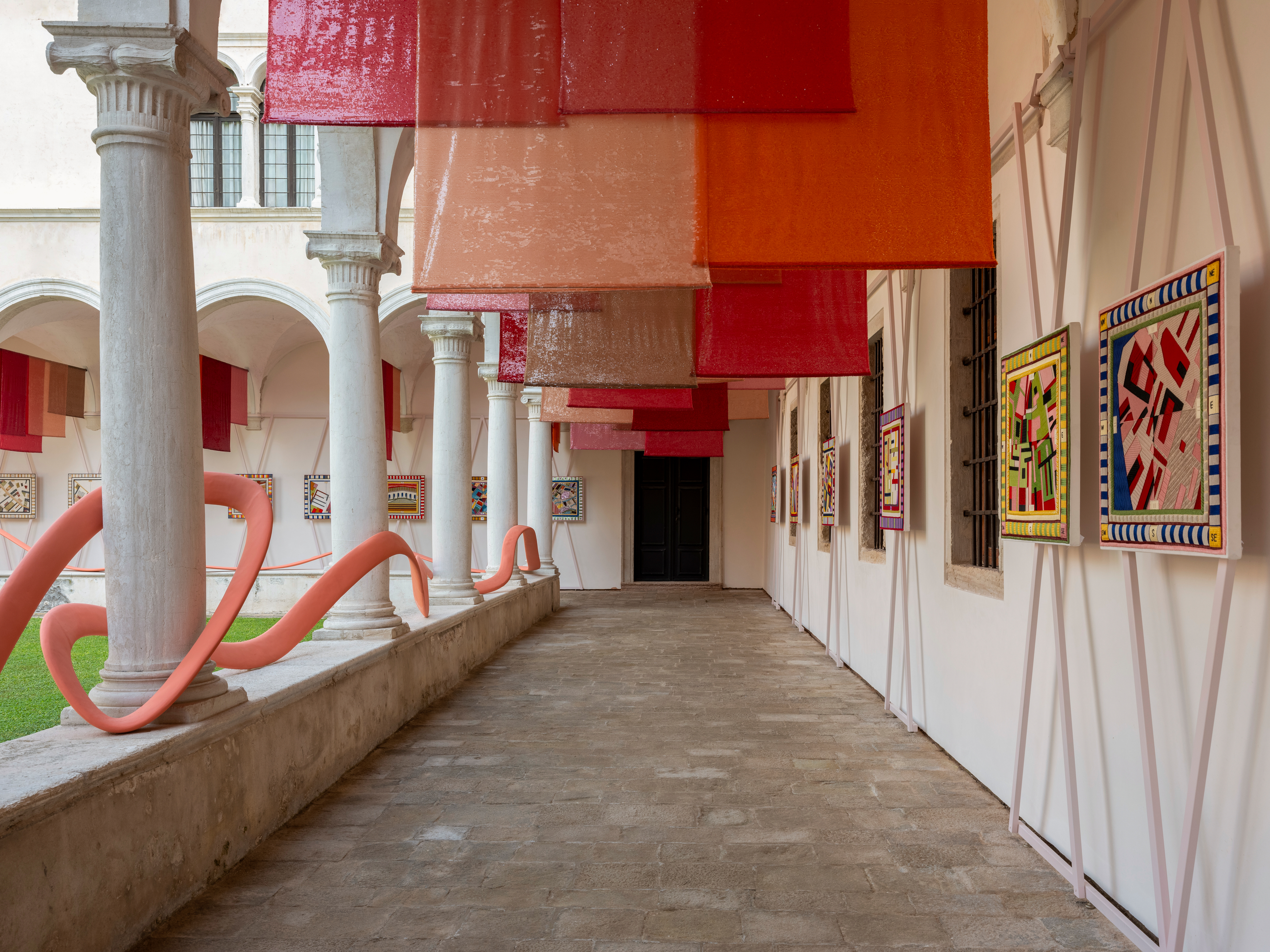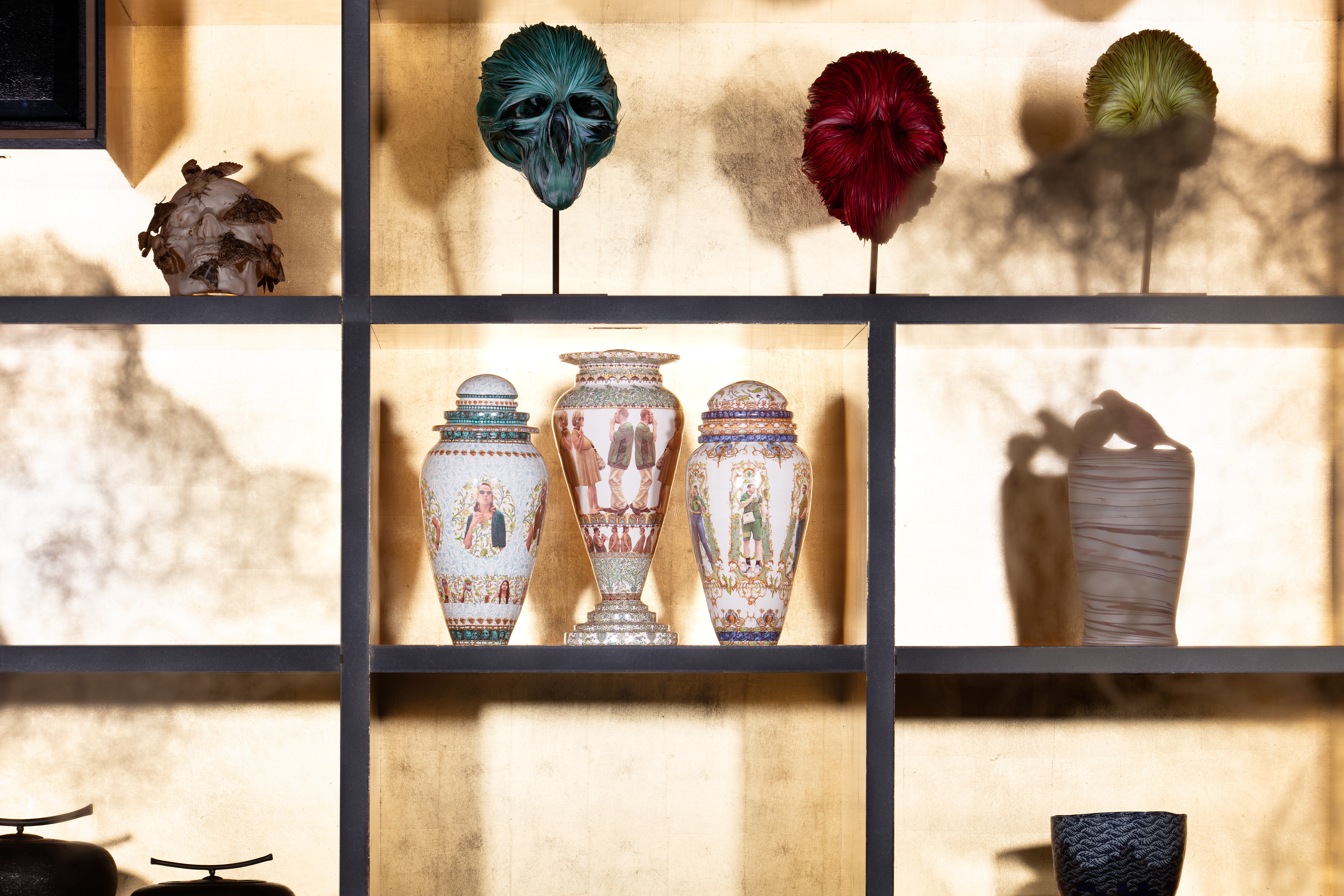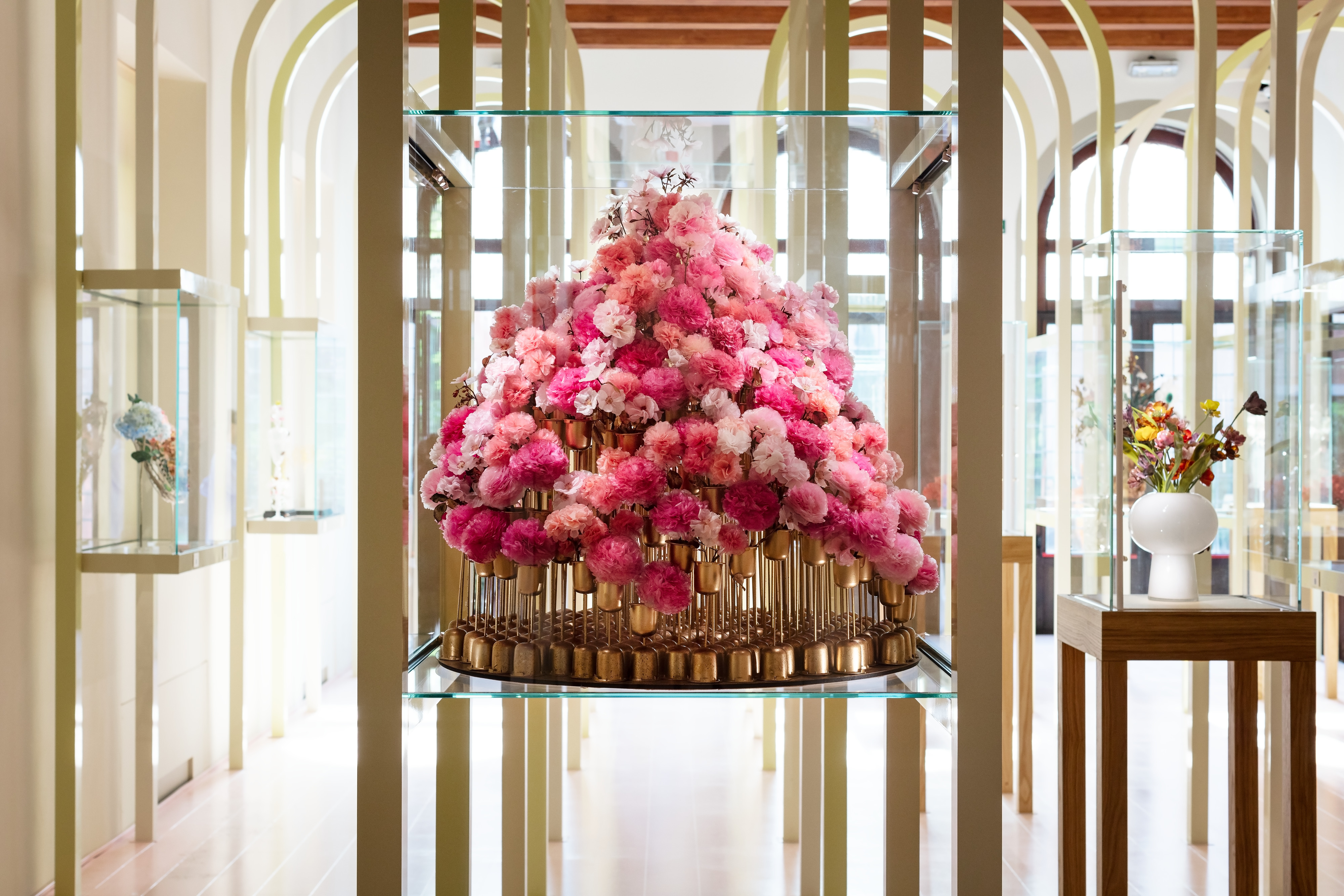
Flying over Venice, coming into land at Marco Polo airport, you can’t help but be struck by how small this precious and precarious archipelago is. For a city that maybe looms larger than any other in the global imagination, it really is tiny. Scale is a running theme in Venice. From the grandiloquence of its historic trading status, and the wealth and beauty that it birthed, to the looming cruise ships, disgorging their hordes to fill the tiny streets, backing-up for photos like confused ants.
Biennales and festivals butt into each other, as do the boats of their starrier guests. Any trip to Venice comes with rumours of which celebrity, oligarch, prince or political leader also happens to be in town. Such is the scale of Venice that it’s not impossible you might rub shoulders with Oprah or someone will show you their film of her climbing into a water taxi like anybody else. For all of its magic, a city built on water has a certain levelling quality when it comes to logistics, too. On boats, everyone bangs their heads; in summer, everyone sweats.
Discover ‘The Journey of Life’ in Venice

Scale is what repeatedly came to mind at the opening of the third Homo Faber Biennale at the end of last week. This show, which is on at the Fondazione Giorgio Cini on San Giorgio Maggiore for the month of September, is astonishingly ambitious. It brings together over 800 examples of contemporary craftsmanship by around 400 individuals or studios from more than 70 countries. The exhibition is the flagship project of the Michelangelo Foundation for Creativity and Craftsmanship, a non-profit organisation co-founded in 2016 by Johann Rupert and Franco Cologni based in Geneva, whose mission is evident in its title. It makes perfect sense that Homo Faber’s global showcase takes up temporary residence in Venice, a city literally built on the trading routes of culture and commerce.

The third edition of Homo Faber is titled ‘The Journey of Life’ - a theme devised by Hanneli Rupert the foundation’s vice-chair and Johann’s daughter, and art directed by auteur Luca Guadagnino, together with the Milanese architect Nicolò Rosmarini. The premise is simple, charming and poetic: across 11 rooms and spaces in the Fondazione Giorgio Cini, we move through sequential stages of life where the 800 works of craft have been thematically grouped, with sometimes explicit and other times implicit connection to their category. So we begin with birth, then childhood (toys), celebration (tableware), inheritance (family studios), love - courtship (flowers), love - union (works of a conjugal theme), journeys (travel), nature (natural materials), dreams (masks), dialogues (collaborations) and finally afterlife (ceremonial objects and ideas). Phew. The message is that craft supports us through the entirety of our human existence and beyond.

For something as fundamental to humanity as craft, it is a slippery fish. Definitions feel futile because it really is as all-encompassing as anything that comes as a consequence of mind and hand using a material to meet a need. In ‘The Journey of Life’ we see knives and jewellery, a piano, Korean death hats, wooden furniture, plastic toys, ceramic flowers, ethereal textiles, glassware of all shapes and sizes, a blobular bath, a wrought iron bed, a travelling trunk that is more like a mobile wardrobe, a watering can, a sculpture made from used cigarette filters.
The net has been cast so far and wide that each room elicits a gasp on entry at the sheer volume of weird and wonderful objects, and then a repeated chorus of ‘gosh’ and ‘how wonderful’ and ‘isn’t that fascinating’, as one begins to parse the individual contents on show. For Homo Faber, the curatorial endeavour has been to seek out the finest examples of quality in each skill, and the quality of workmanship is breath-taking. It sounds churlish to say it is overwhelming, when scale and spectacle are very much the intention. Individual works are captioned with the name and location of each maker together with a QR code which, at the press preview, wouldn’t connect further, agonisingly - for all involved. We were left to admire beauty and marvel at workmanship.

Guadagnino and Rosmarini’s artistic direction brings layers of wit and whimsy to the journey variously with vast mirrored surfaces and reams of pleated fabric in homage to Carlo Scarpa’s 1953 design for an exhibition in Sicily of paintings by Antonello da Messina. Two giant rugs designed by Guadagnino and Rosmarini for Jaipur Rugs in the ‘celebration’ and ‘journeys’ rooms bring a welcome softness underfoot. A playful palette of powdery candy colours lifts the whole experience considerably, both framing the exhibition and providing a crucial layer of elevation between the (exquisite) refurbished interior architecture of the Cini, and the exhibits themselves. Craft in volume can be earnest, and it’s surprising how much a colourful scaffold can help to mitigate the potential relentlessness of disparate material expression. Travelling back to the airport, it strikes me that the curious hues of this palette are the luminous and liquid colours of Venice - materials, patina and light combined. The abundant mirrors are for reflection, of light, rooms, objects and ourselves.

The experience is at its best in the human interactions that punctuate proceedings. In most rooms there are workbenches with artisans practising their craft, patiently answering the questions of visitors. We learn about watches and jewellery, globe-making and embroidery, and suddenly the gateway between knowledge and skill is thrown open. The work comes to life and visceral connections are made. Context is everything with craft; it is what elevates matter into intelligence. Each individual object is a portal to a story, a culture, a life, a world (and a way of meeting it), and in an exhibition of this scale and breadth, greater contextual illumination would leave visitors with a very different understanding of why people make today, and why it matters. It would be unfeasible to have 400 workbenches, but without the human stories connected to the works on show, the focus remains purely on the physical manifestation of craft, which is only part of the story.

Elsewhere, the impressive Homo Faber NextGen educational outreach program has enlisted 65 students and graduates from 43 colleges in 25 countries to act as cultural mediators for the exhibition. As state funding for craft dwindles almost universally, this opportunity is extremely valuable for students. Hearing the stories of these individuals brings a great degree of humanity to the experience, helping to lift the potentially passive adulation of objects for their aesthetic qualities alone. The NextGen mediators bring optimism to the fore - human faces and voices that ground the global practice of craft in reality, acting as a powerful indication of the sector’s future. Homo Faber’s youth support, education and network operations are undoubtedly its greatest strengths.

At the end of the exhibition, we are introduced to Via Arno - a new Richemont-owned venture that seeks to connect global craft with commissioners and collectors. Their presence here at Homo Faber is ostensibly to facilitate sales between the exhibitors and visitors, and also to soft launch their service more broadly. It’s a subtle exit-through-the-giftshop moment albeit with greater dignity in a series of soothing rooms, less intensely populated than the exhibition. Importantly, it reminds visitors that all they have seen and admired are living trades, businesses and livelihoods, not hobbies as craft is too frequently considered. Via Arno will of course charge for its services, and it will be interesting to see if they can successfully navigate that fine line between access and perceived exploitation (from the artisans’ point of view) where other similar outfits have fallen down. Is it possible to scale the sale and commissioning of craft through a globally operating, streamlining service, or is the nature of craft commissioning only successful at an intimate, local, personal, human level?

‘A Journey Through Life’ is a glamorous and glamourising exhibition. It raises more questions than it answers about the validity and viability of craft in contemporary life. Divorcing such an array of human achievements from the cultures and contexts, the minds and hands, which bring them to life inevitably renders these works as rarefied objects of beauty for consumption. Each piece is an individual expression of people and place, material and time; to witness such a trove altogether dilutes the potential for intimate connection into distancing awe. One could visit every day for the month and delve deep into discovering new nuances in different works. Beyond the bombast, it is the miniature holes in the spout of that exquisite water can that will stay with me. Each is a perfect punctuation by a careful hand.

The values inherent in the practice of craft feel evermore relevant - responsibility, circularity, connection, repair, resilience, localism. Is a global, glittering showcase of this scale the most effective way of celebrating the endurance of human knowledge transmission, which is ultimately craft’s most compelling quality? There is no denying this is a seductive and moving exhibition, but fewer works with greater connection to the embodied intelligence and cultural context within them would make a more powerful case for the value and necessity of craft in modern life. As our world remakes itself in front of our eyes, we need to interrogate why things matter, not just marvel at what they are. Craft at scale, even in Venice, is a hard nut to crack.
Homo Faber's 'The Journey of Life' runs from 1 – 30 September 2024 at Venice, Fondazione Giorgio Cini homofaber.com







